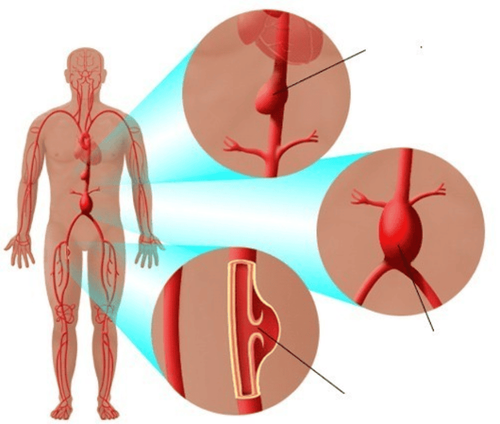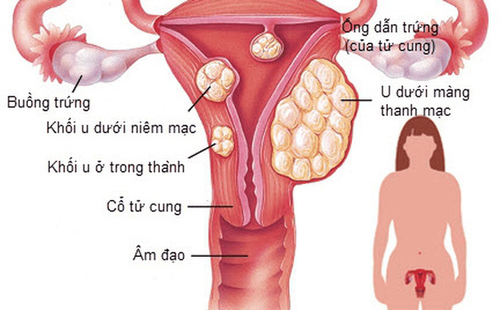This is an automatically translated article.
The article was professionally consulted with the Radiologist, Department of Diagnostic Imaging - Vinmec Central Park International General Hospital.At present, limb vascular diseases are relatively common. Among them, chronic thromboembolic stenosis of the extremities is the most common, causing many patient injuries and even amputation and death if not treated appropriately. Angioplasty, angiography, and stenting of the extremities digitally erase the background is an effective treatment for this condition.
1. What is the procedure of imaging and dilating, placing vascular stents to erase the background?
Chronic long-term vascular stenosis causes severe ischemia and leads to ulceration, necrosis, and gangrene spreading from the extremities to the base of the extremities. If not recanalized soon, the final consequence is to amputate the injured limb, which can be minimally or extended amputation to preserve life and thereby significantly reduce the ability to live, create economic burden. as well as treatment costs for both the family and society.With the development of medicine, endovascular revascularization is now relatively common, such as angioplasty, stenting of extremities, fibrinolysis or removal of atheroma... Among them, the procedure angiography and dilation, digitized extremity vascular stenting is the most basic method with the advantages of minimal infiltration, few complications and a high success rate >90%.
2. What are the indications and contraindications of limb angioplasty and stenting?
Indications: Arteriosclerosis or thrombosis of the extremities and causes clinical symptoms such as claudication, non-healing ulcers... Signs of severe limb ischemia ABI (upper limb blood pressure) /lower extremity blood pressure) <0.9. As required by the clinician. Contraindications Patients with diffuse arterial lesions. History of allergy to iodinated contrast media. Pregnant women. End stage renal failure. Patients with coagulopathy who have not been adequately treated and controlled.
Bệnh nhân hẹp tắc động mạch chi có chỉ định thực hiện kỹ thuật chụp và nong, đặt stent mạch chi số hóa xóa nền
3. Steps to prepare before dilatation and stent placement
Person performing limb vascular stenting A specialist who has been trained in limb vascular stenting technique; Auxiliary physician; Electro-optical technician; Nursing; Doctor, anesthesiologist (if patient cannot cooperate). Equipment and vehicles Digital background removal angiography (DSA); Dedicated electric pump; Film, film printer, image storage system; Lead vest, apron to shield X-rays. Drugs Local anesthetics; Pre-anesthesia and general anesthetic (if the patient has an indication for general anesthesia); Medications to control the patient's blood clotting; Water-soluble iodinated contrast agent; Antiseptic solution for skin and mucous membranes Prepare the patient before the procedure The patient and relatives are thoroughly explained about the procedure and procedure for imaging and dilatation, digitized limb vascular stenting, and consent to be signed. risk acceptance prior to the procedure for limb vascular stenting. The patient must fast for 6 hours before. The patient's position when taking and dilating, placing a stent on the limb is supine and closely monitored for vital signs such as breathing rate, heart rate, blood pressure, electrocardiogram... Disinfect the skin surface with a solution. Disinfect and cover with sterile cloth with holes. Special medical supplies that need to be prepared Angioplasty; Set of size 5 - 6F internal circuit board; Standard wiring system 0.035inch; Angiography catheter size 4-5F; Microcatheter 2 - 3F and microwire 0.014 - 0.018inch; Balloon and stent (stent) lumen; vascular access kit.4. The procedure of imaging and dilatation, digitizing limb vascular stenting to erase the background
Anesthesia The patient lies supine, is established intravenous line with 0.9% physiological saline solution. In most cases, only local anesthesia is needed. A few uncooperative or young age can have general anesthesia before performing the procedure of imaging and dilatation, digitizing limb vascular stenting to erase the background. Depending on the purpose and location of the narrowed blood vessel, choose the location and direction of flow (downstream or upstream) to place the tube into the vessel lumen. Use a 21G micropuncture needle (micropuncture) to puncture the lumen under ultrasound guidance. Intravascular catheterization is routine, in case of need for sub-knee vascular intervention, it is necessary to place the tube into the lumen for a longer time. Digital angiography erasing the background to assess the degree of stenosis Conduct angiography of the lower extremities through a system of intravascular catheters. If abdominal aortic angiography is combined, use a nonselective Pigtail catheter and evaluate the total circulation of the extremities in that region. Angioplasty and stenting of extremities Using catheters, wires or microcatheters, microwires to pass through the site of narrowing of blood vessels due to atherosclerosis or thrombosis. Through the wiring system to bring the balloon through the narrow blockage. The pump expands the lumen by pressurizing the balloon. After that, proceed to put the stent system through the position of balloon angioplasty. Angioplasty after stenting with balloon balloon. Evaluation after stenting of the extremities and the end of the procedure Scan to check the circulation of the whole vascular system to evaluate the results of recanalization by dilation and stenting of the extremities. Withdraw the catheter and lead wire from the patient. Compress or close the blood vessel with a vascular closure kit.5. Evaluation criteria for successful limb stenting
After performing the procedure of imaging and dilatation, placing vascular stents to digitize the background, the vascular stenosis is successfully recanalized if the degree of remaining occlusion is less than 30%. The blood circulation before, during and after the stent placement is normal.6. Complications of limb stenting procedure and how to manage

Tắc mạch là biến chứng có thể gặp khi thực hiện thủ thuật này
A system of modern and advanced medical equipment, possessing many of the best machines in the world, helping to detect many difficult and dangerous diseases in a short time, supporting the diagnosis and treatment of doctors the most effective. The hospital space is designed according to 5-star hotel standards, giving patients comfort, friendliness and peace of mind.
Please dial HOTLINE for more information or register for an appointment HERE. Download MyVinmec app to make appointments faster and to manage your bookings easily.













